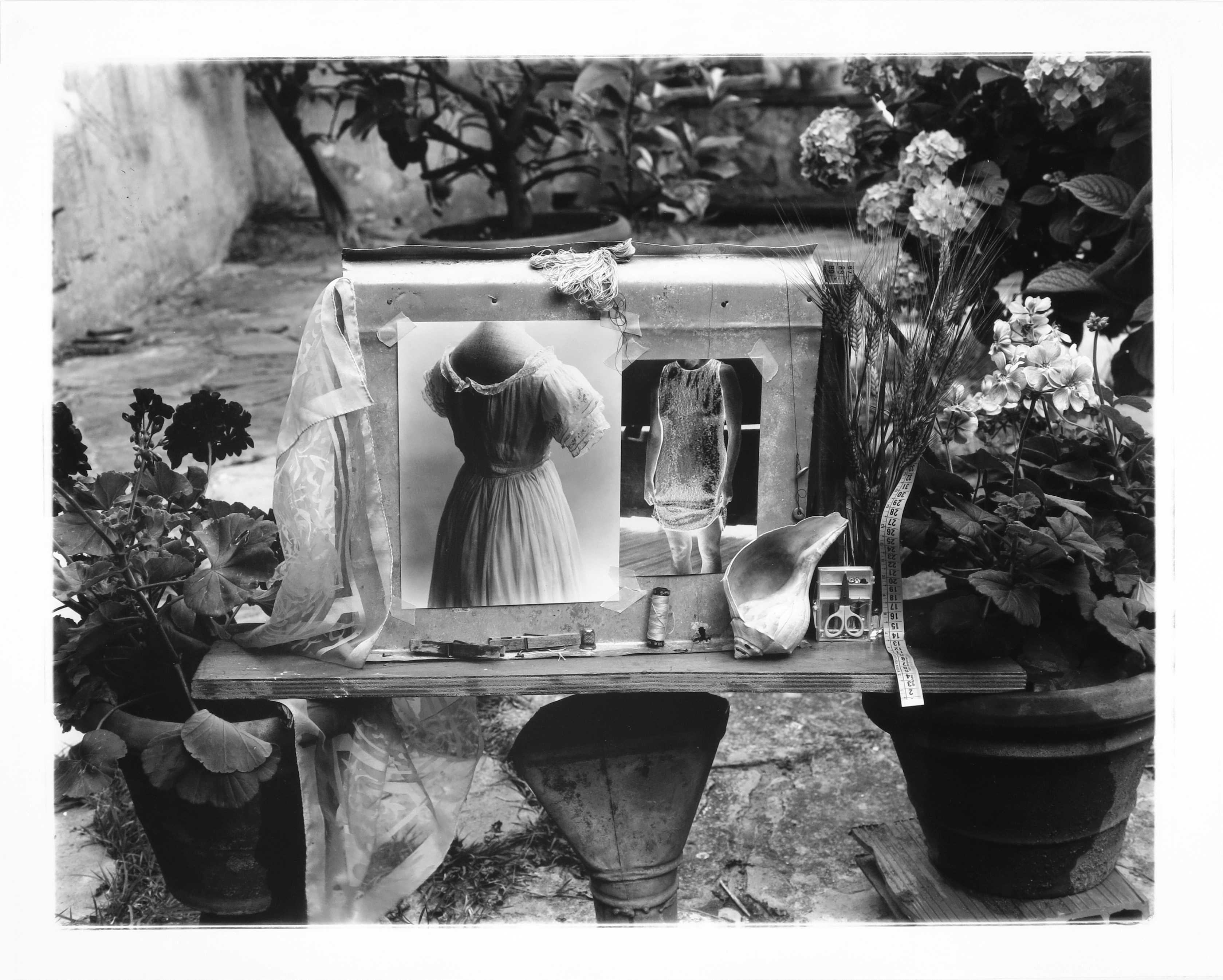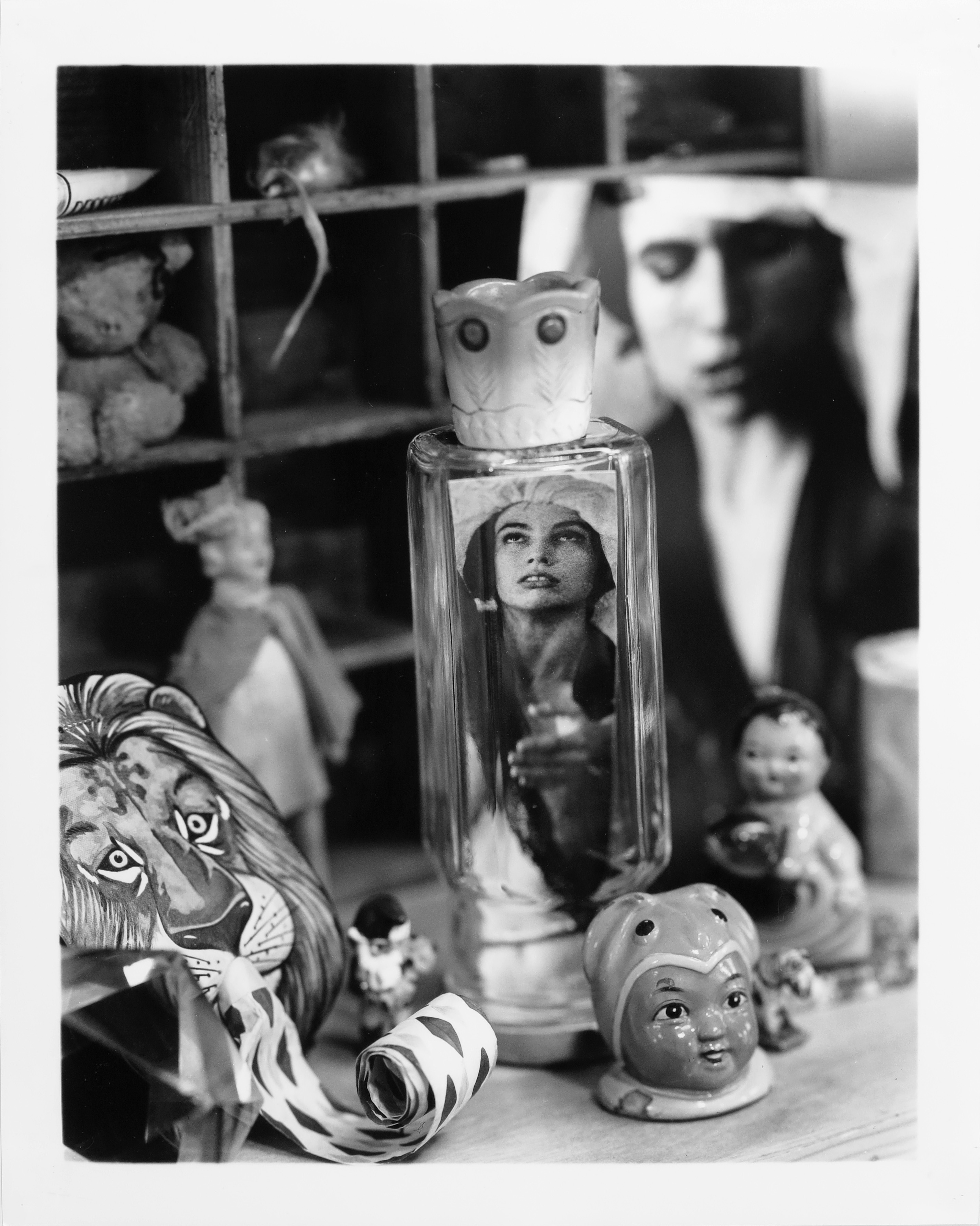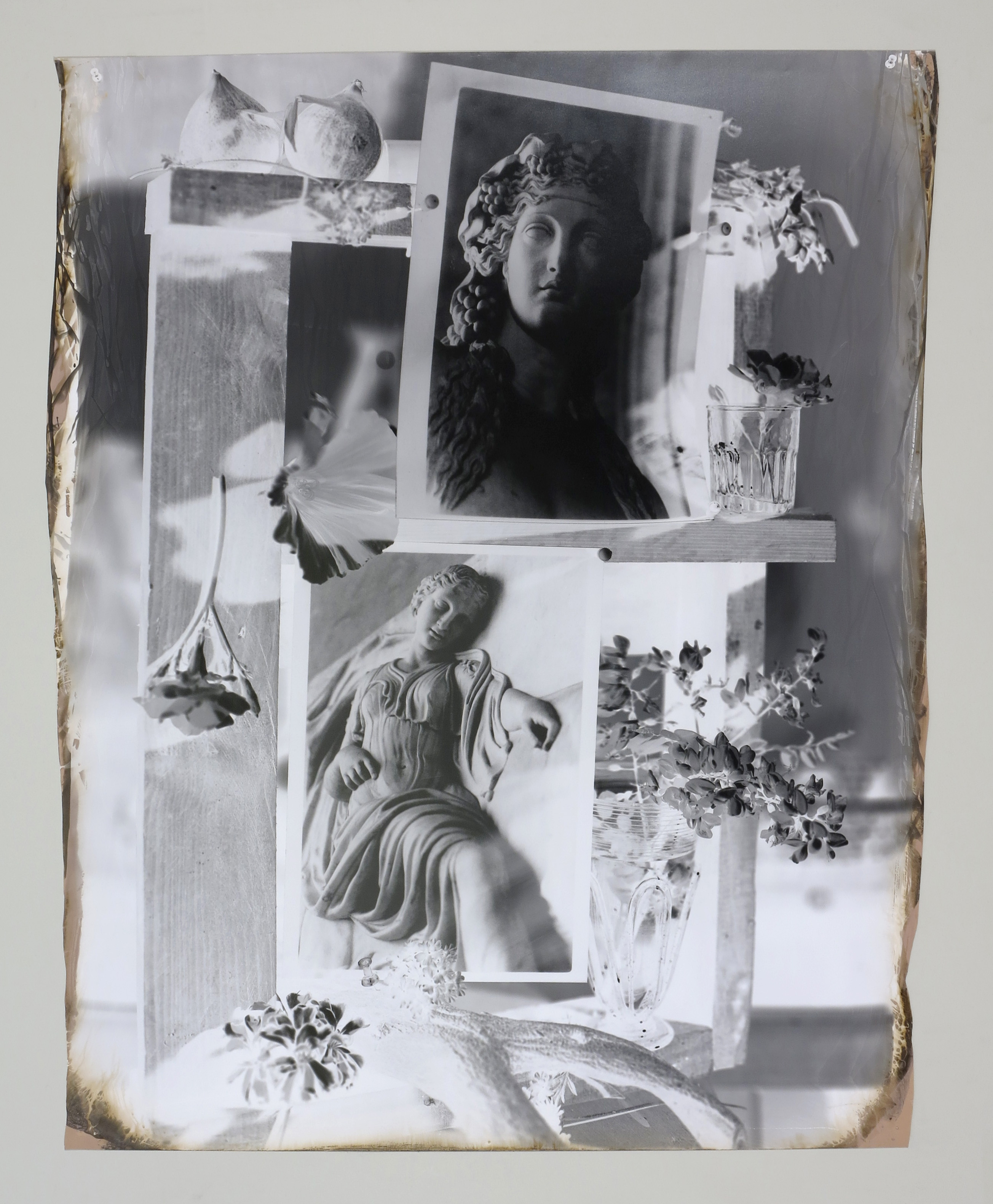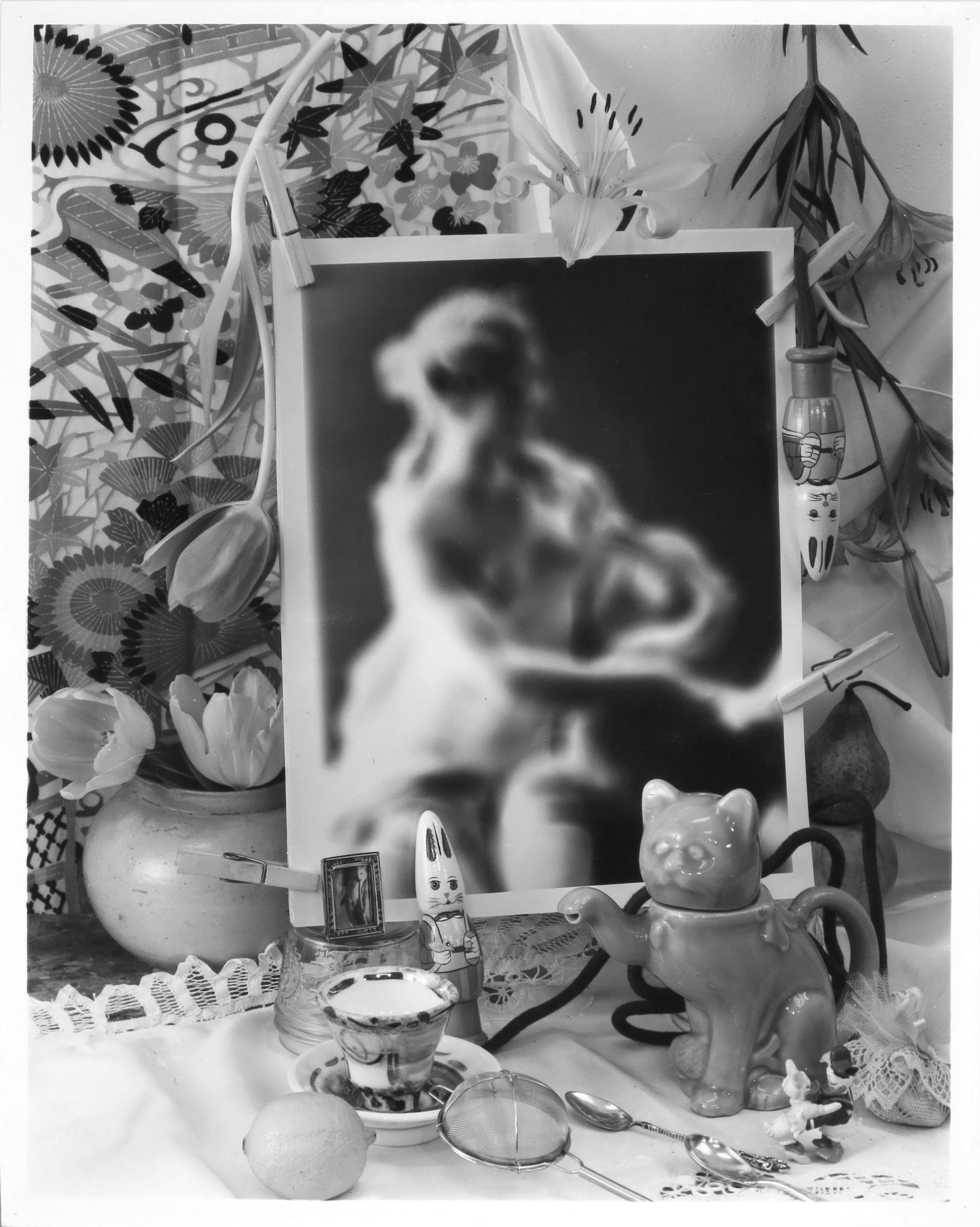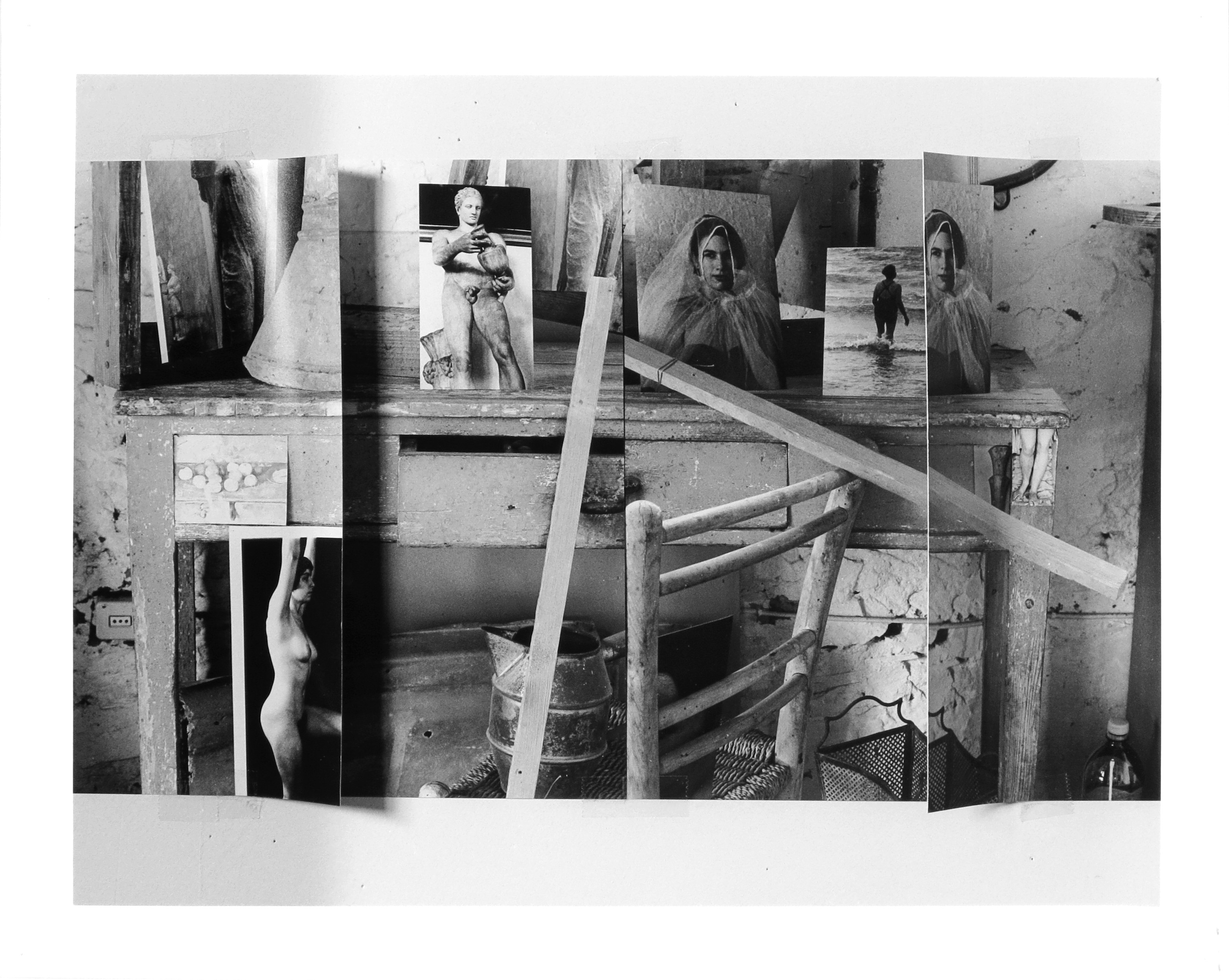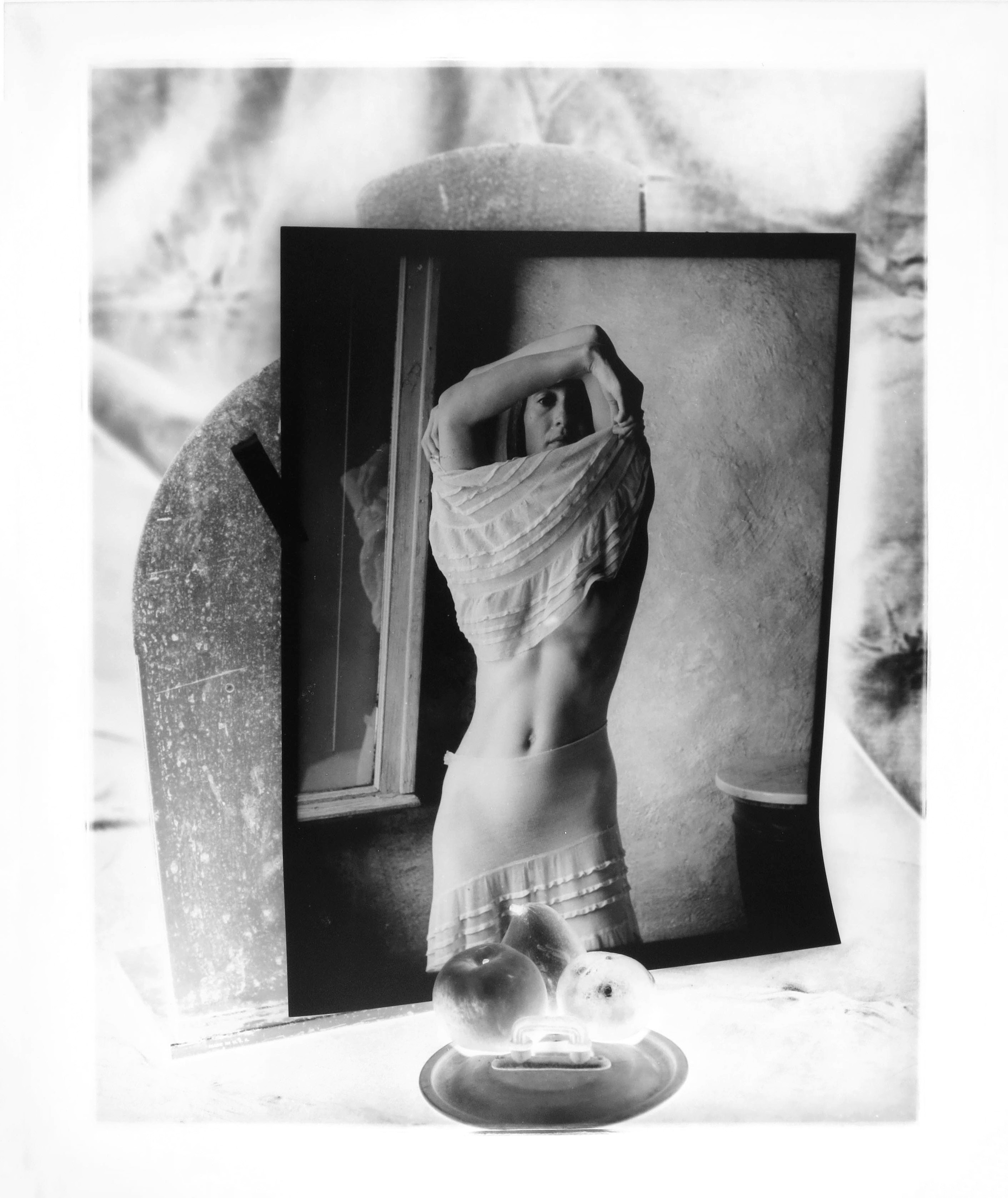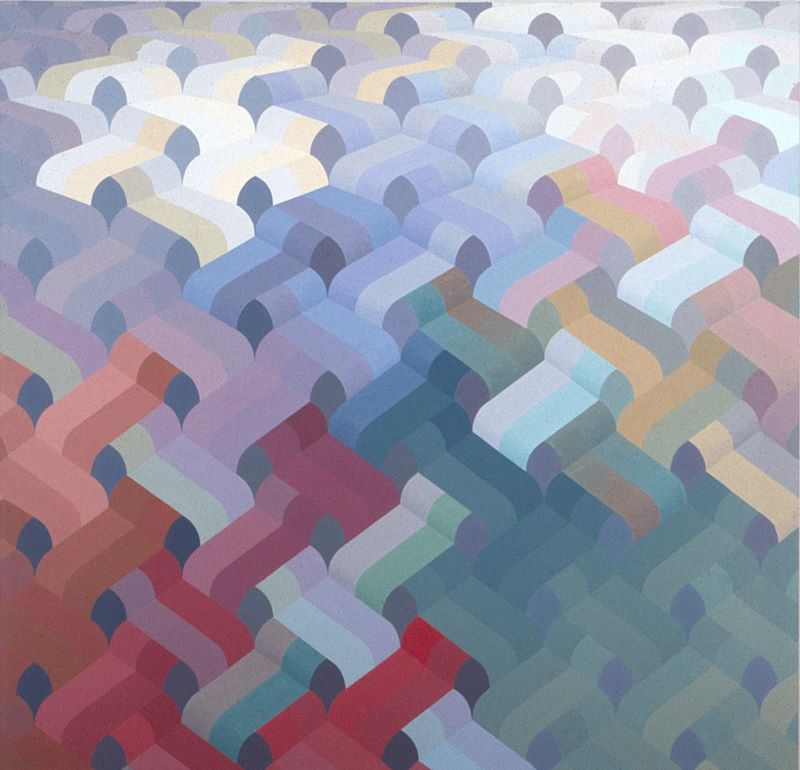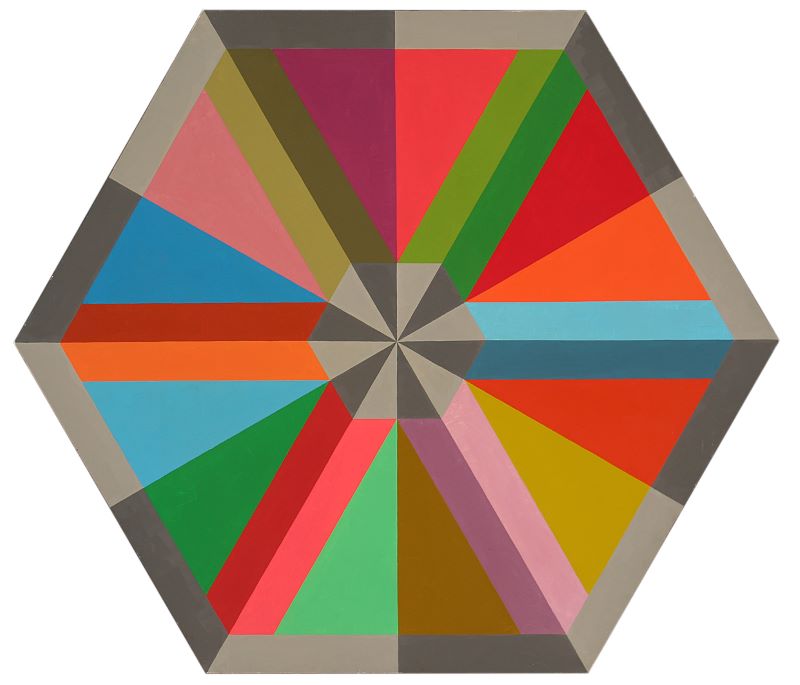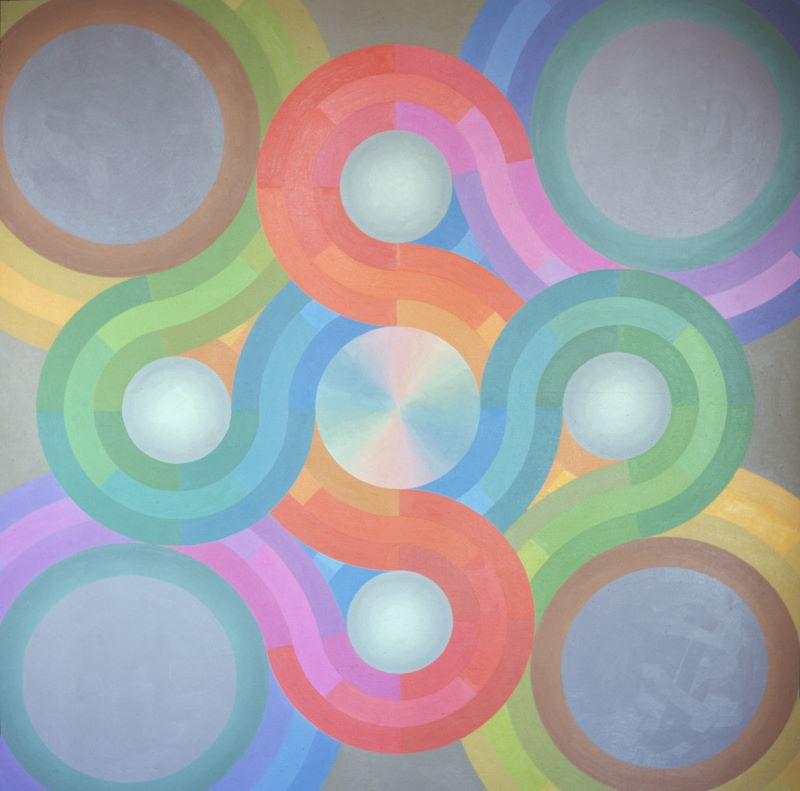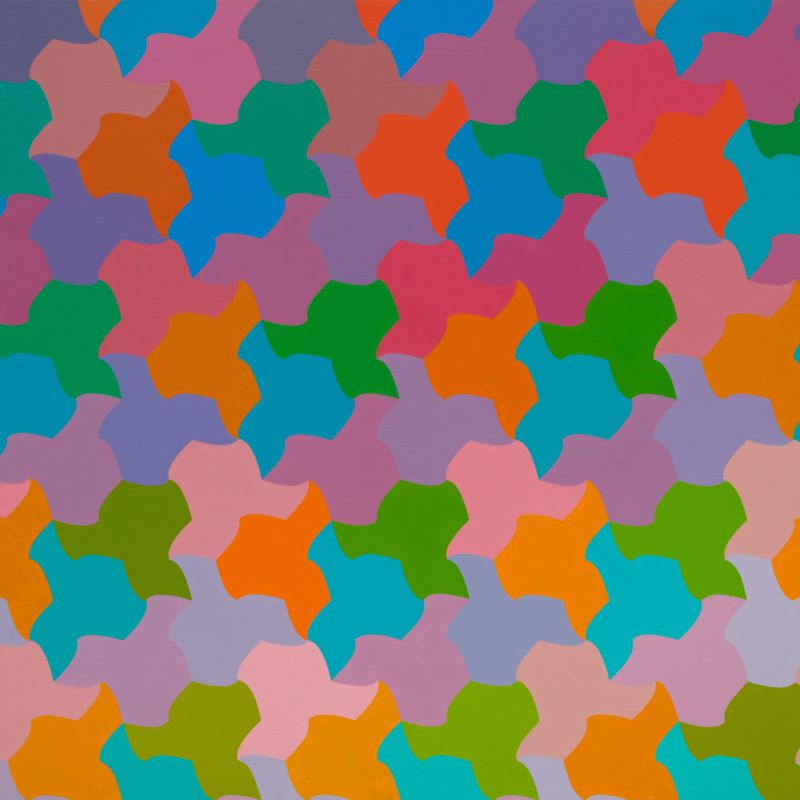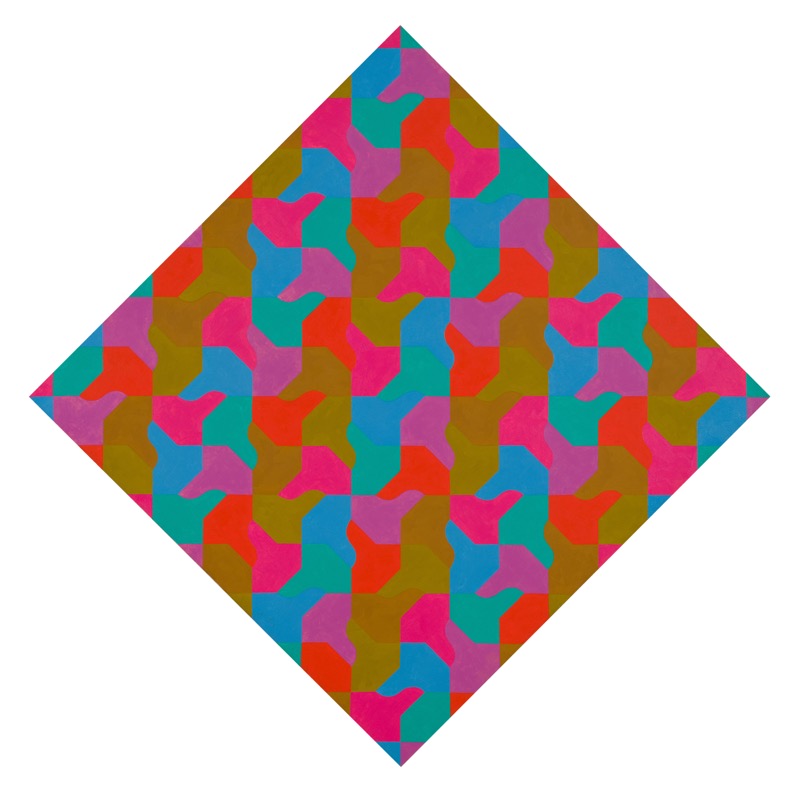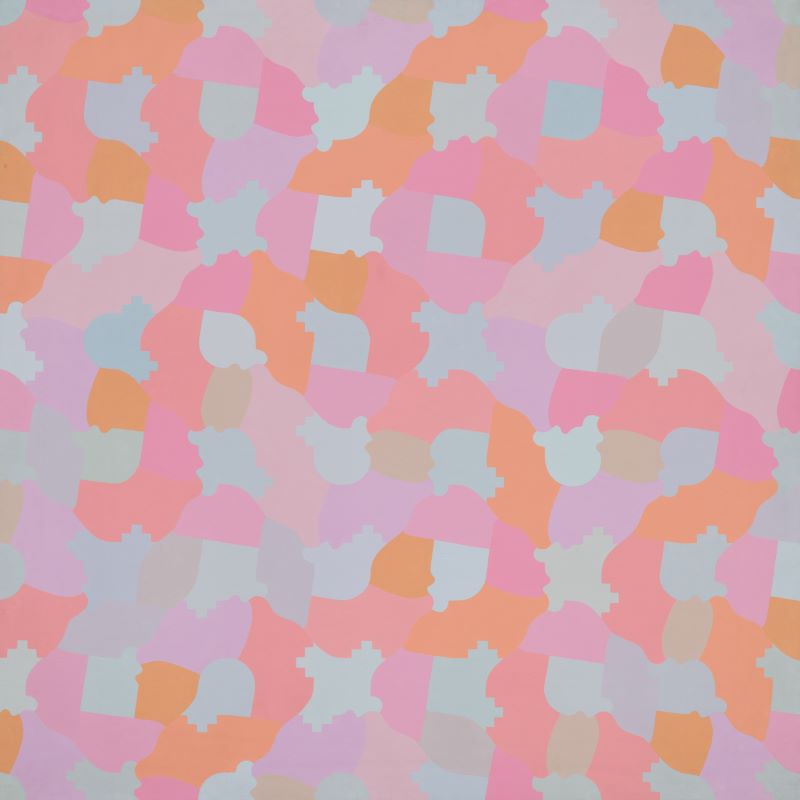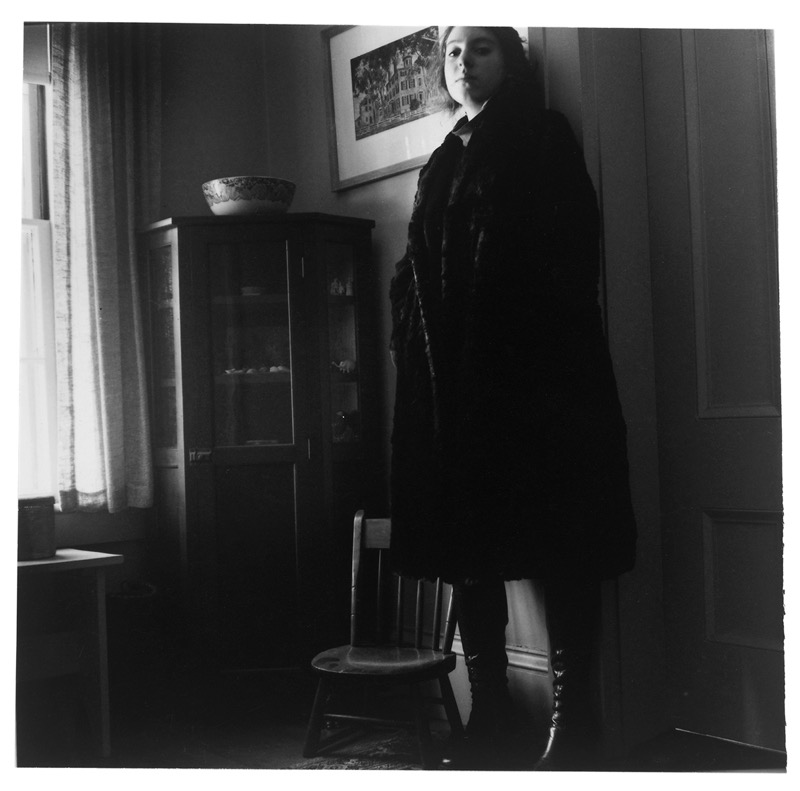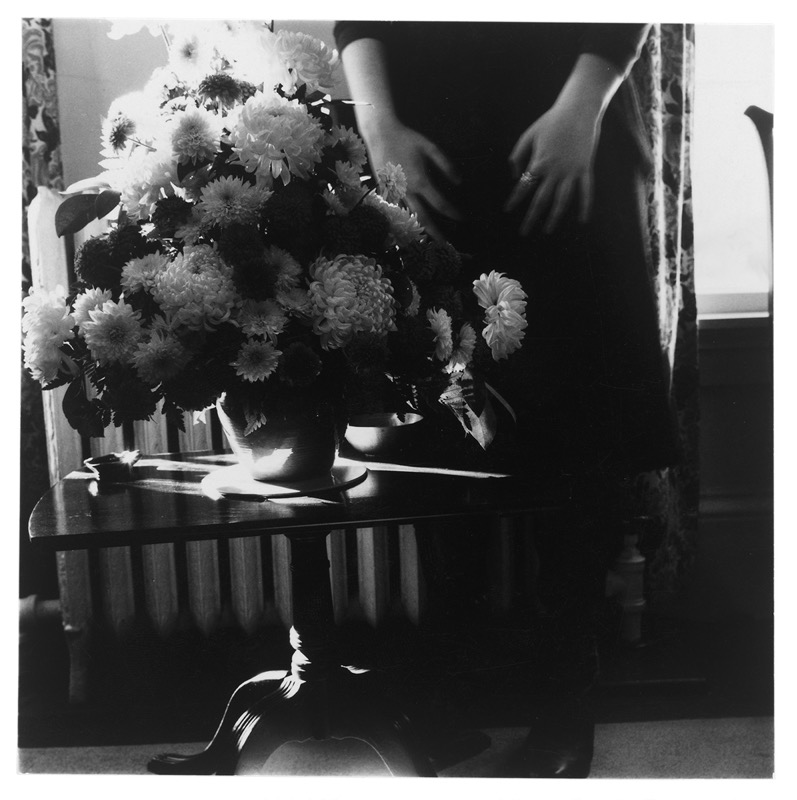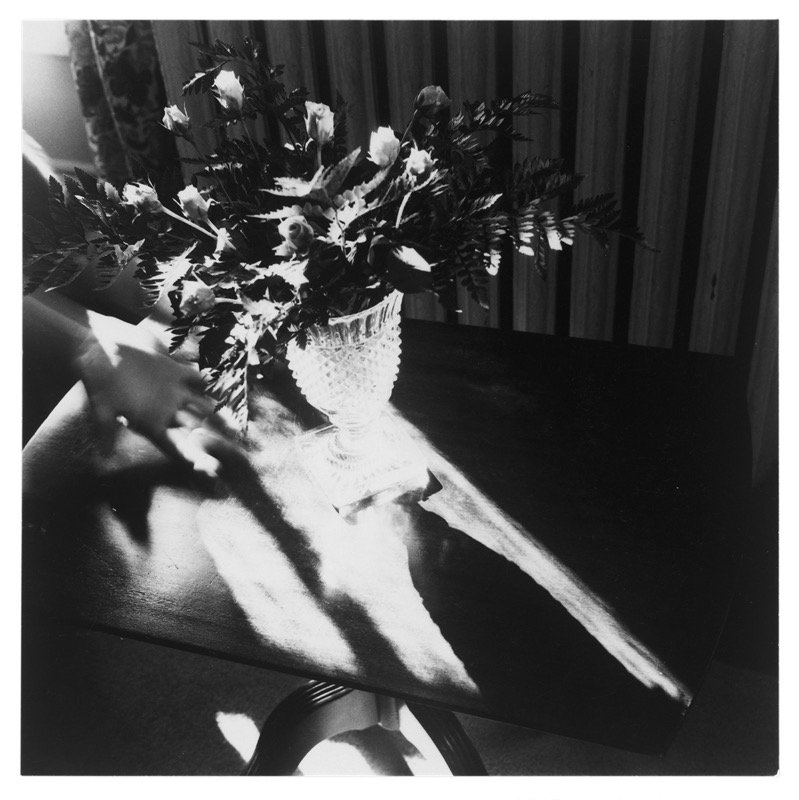Tags:
George Woodman
The first round of funds have officially been sent to recipients of the inaugural WFF Housing Stability Grant for Artists (WFF HSG)!
Read More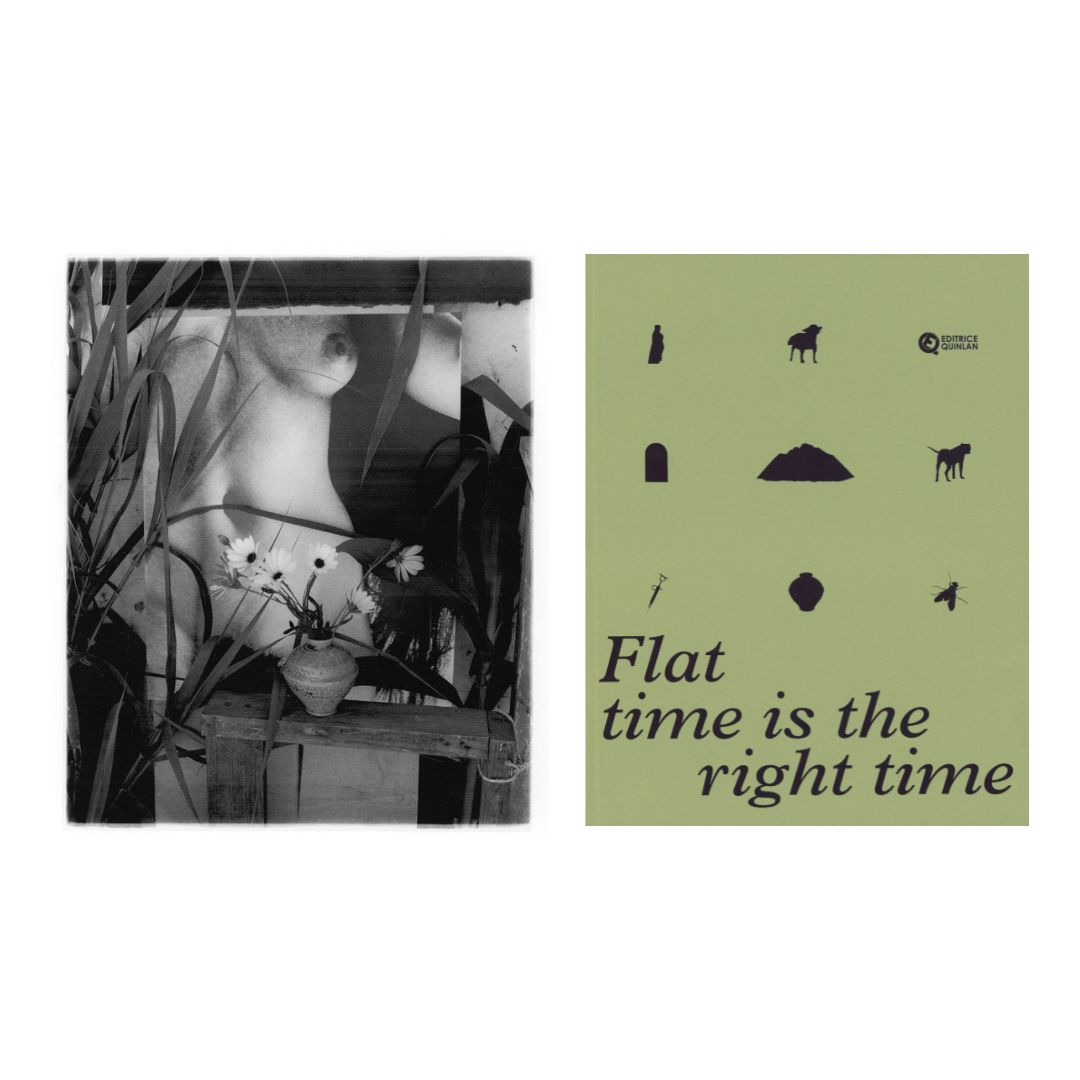
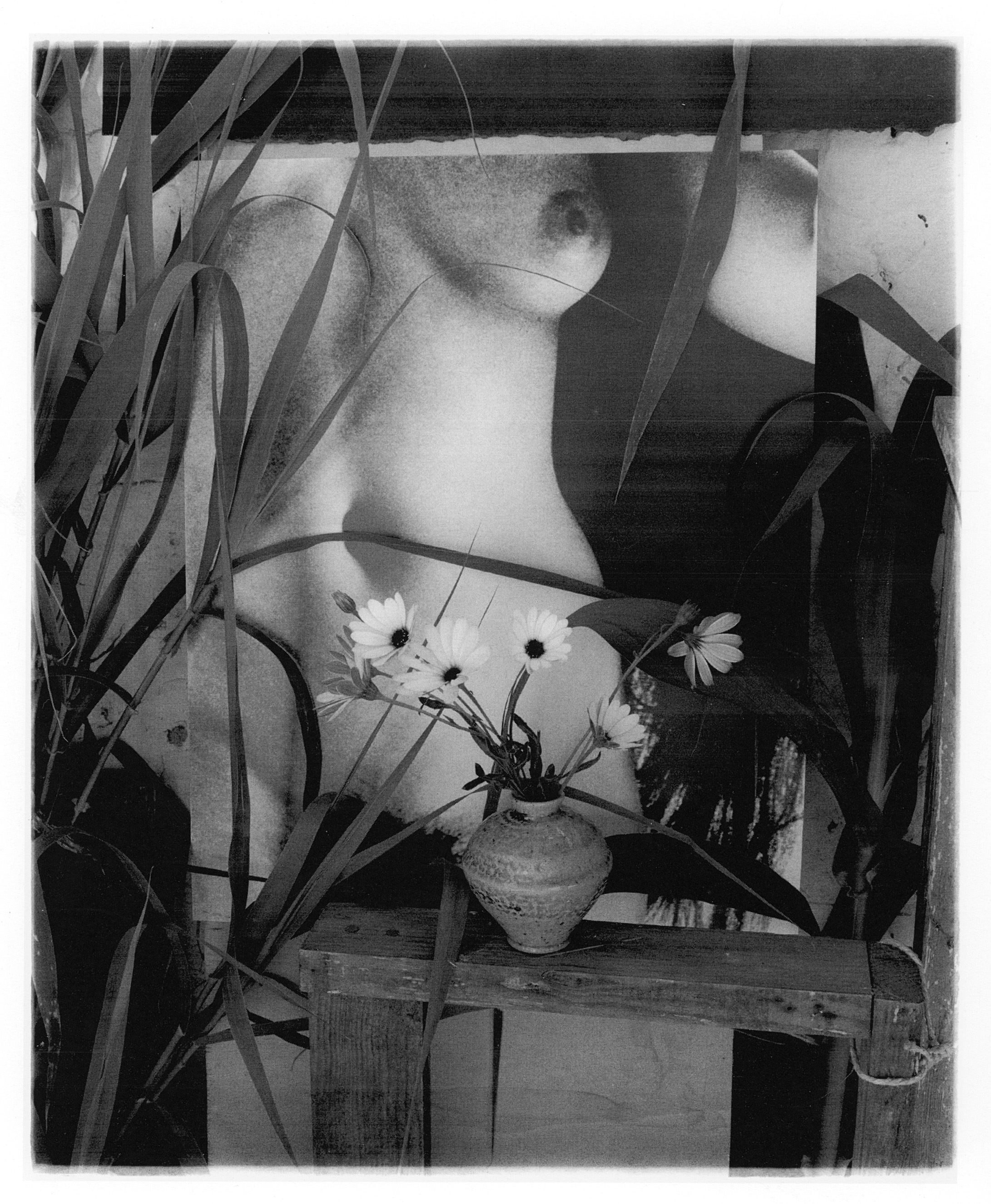
George Woodman’s still life photography bears unmistakable traces of his decades-long career as a painter: His compositions—re-photographed prints and negatives, fruits and drapery, sculptures and paintings collapsed into a single pictorial space—are at once witty and rich in art historical allusion.
Read MoreWatch the exhibition video to listen to Rebecca Lowery, Curator of Exhibitions at the Wexner Center for the Arts at The Ohio State University, discusses George Woodman's evolving use of tessellations and color.
Read More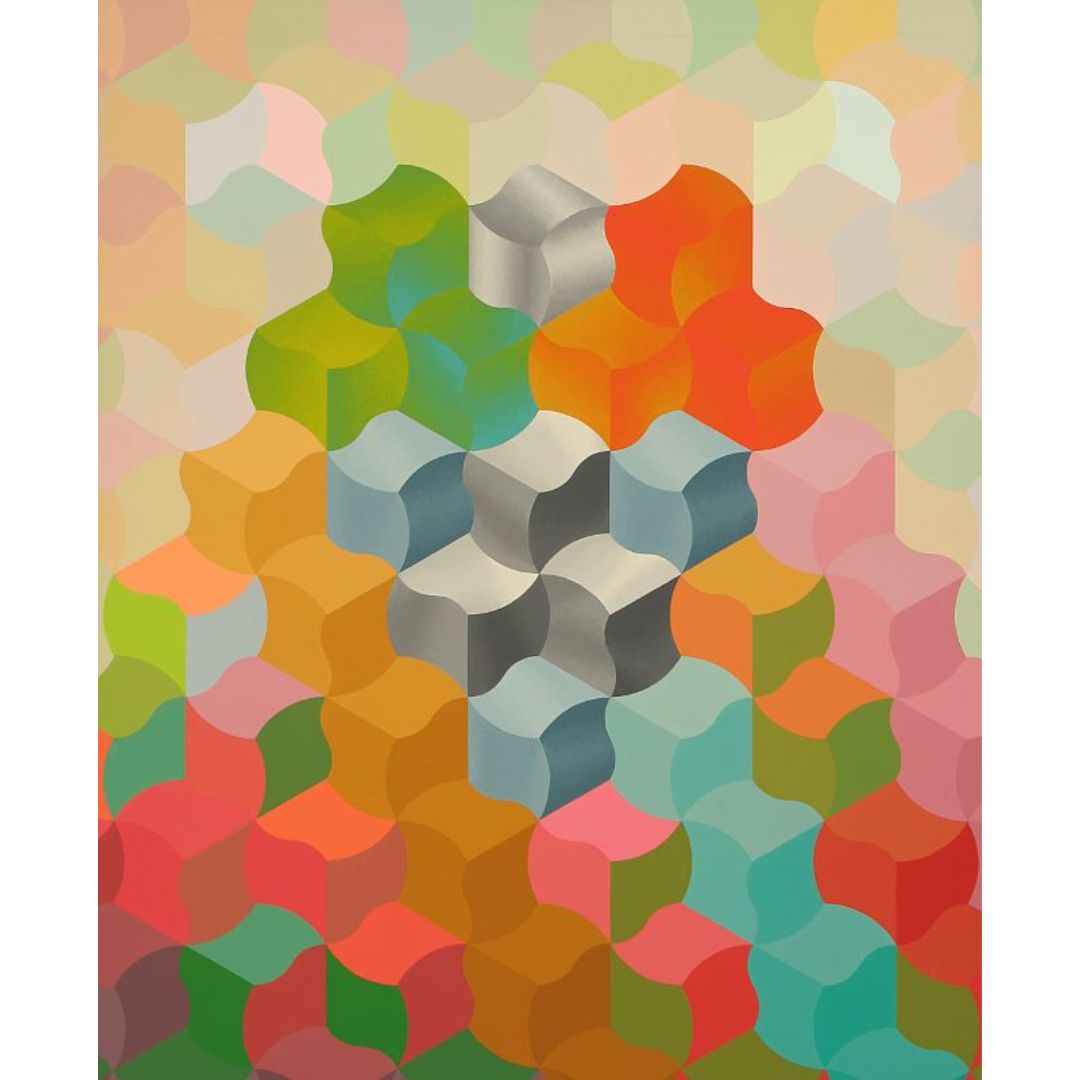

Pattern paintings made up of repeating forms can tend towards uniformity or sameness, but not so for George Woodman. Instead, he integrated color into his pattern systems as an equal to form rather than a subordinate, constructing compositions in which color steers and complicates the viewer’s perception.
Read More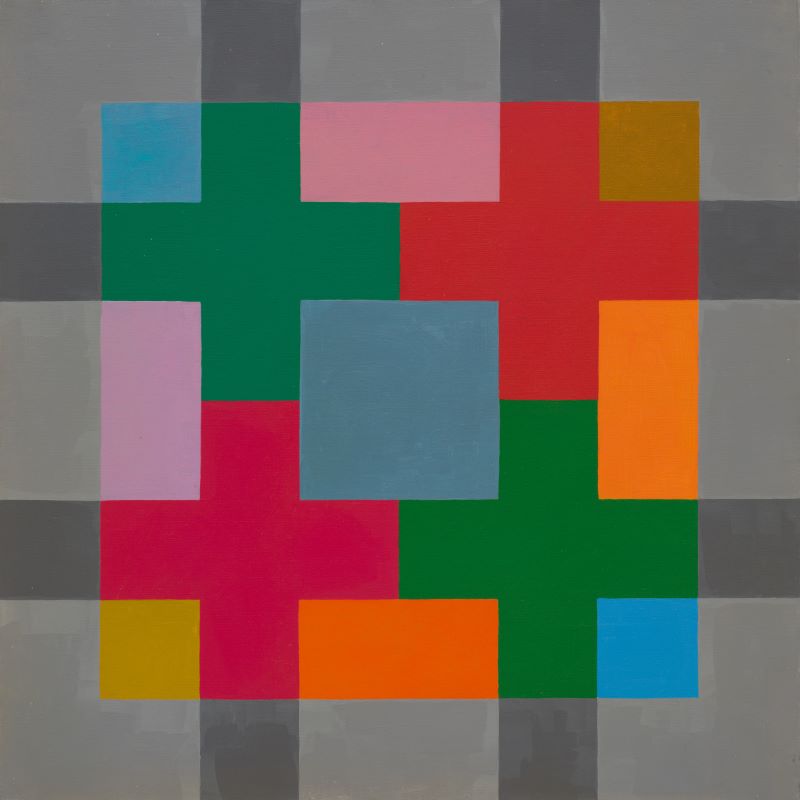
In her essay for the exhibition’s catalogue—“The Mind as it Measures: George Woodman’s Patterns”—curator Rebecca Skafsgaard Lowery discusses Woodman’s approach to pattern and color in the context of his contemporaries.
Read More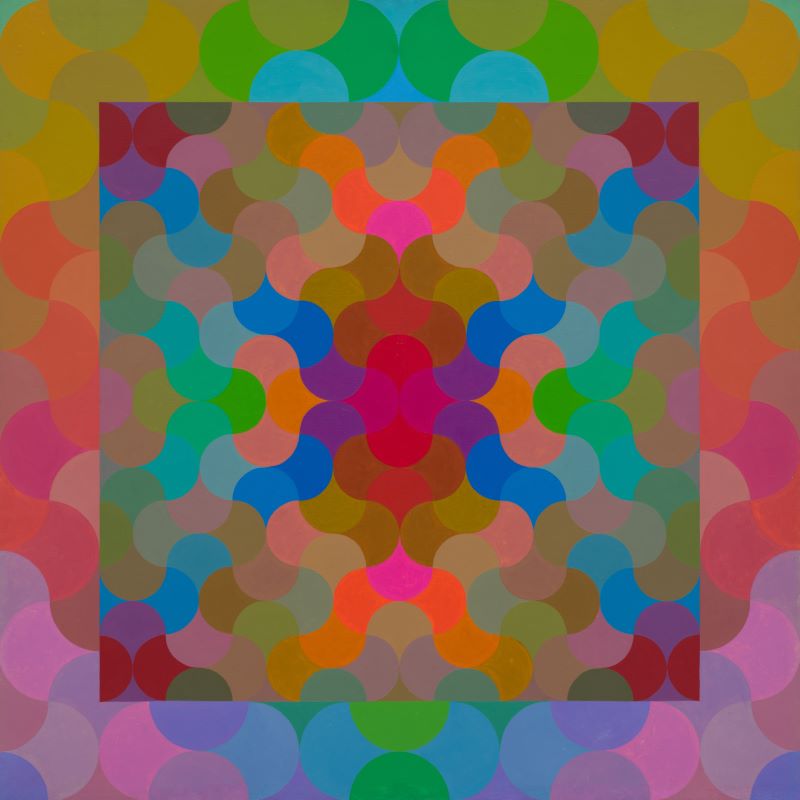
Focusing on geometric abstractions from a significant period within the artist's six-decade career, this exhibition traces the development of George Woodman's singular approach to pattern.
Read More
In recognition of the increasing unaffordability of rental housing in New York City and the housing insecurity it creates for artists, WFF will award grants of $30,000—distributed over three years—to five visual artists with the goal of improving their housing stability.
Read More
We are very pleased to announce the acquisition of a group of important works by Betty Woodman, Francesca Woodman, and George Woodman from the Foundation’s holdings by the Currier Museum of Art in Manchester, New Hampshire.
Read More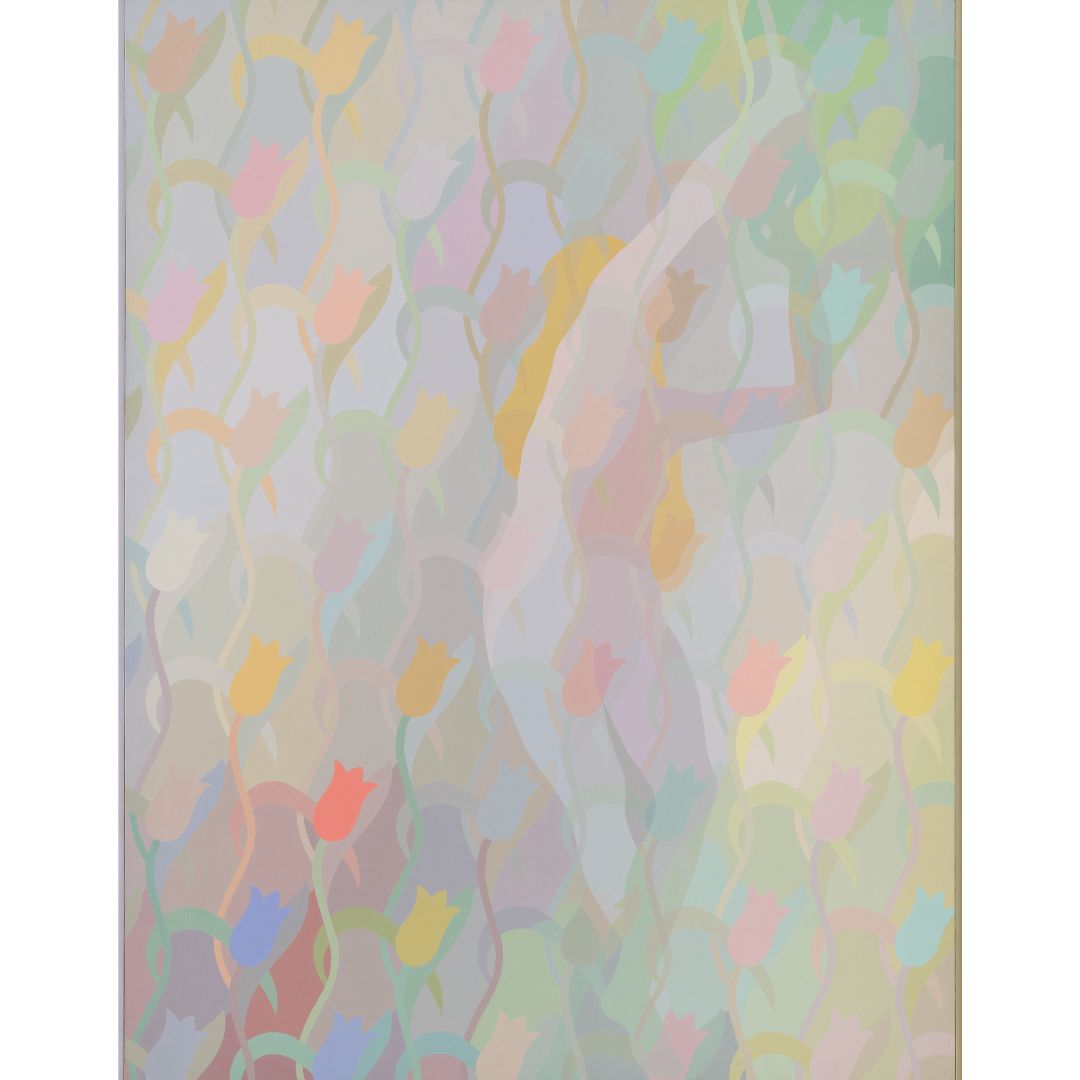
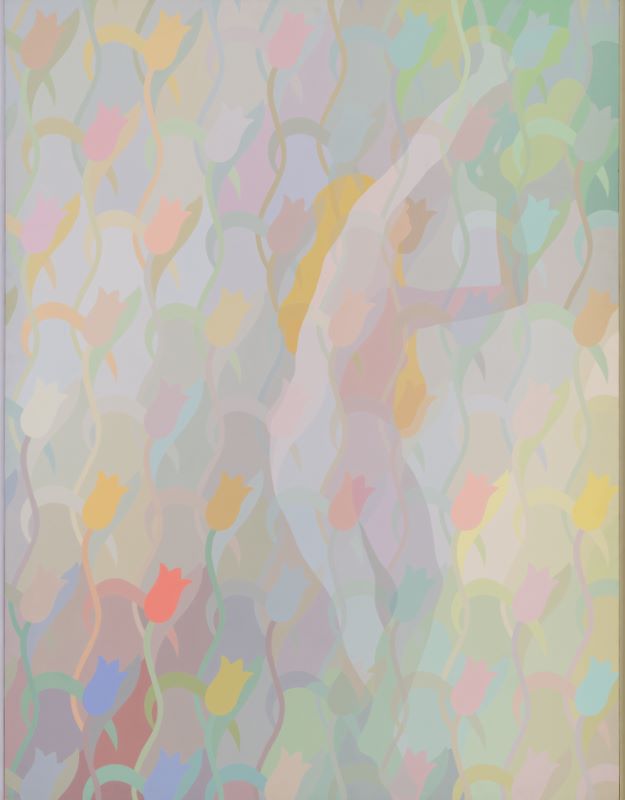
This group exhibition of personal, expressive landscapes features works that merge abstraction and representation, depicting threshold spaces and hybridized forms where the observed and the imaginative meet.
Read MoreCatch a glimpse of Betty and George Woodman's Italian studios and home and hear them speak about the importance of Italy to their work in this exhibition video, assembled from interviews in the Woodman Family Foundation archives.
Read MoreVideo vignettes by Charleston that highlight artworks by Betty Woodman and George Woodman included in the exhibition Betty Woodman and George Woodman. On view through September 10, 2023.
Read More
Read Ajesh Patalay's preview of "Betty Woodman and George Woodman" on view now through September 10, 2023 at Charleston, East Sussex, UK.
Read More





